(24710 products available)

































































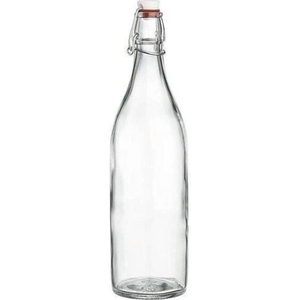




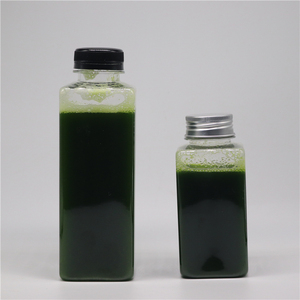


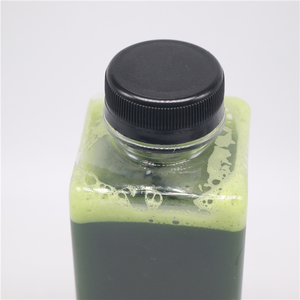


































































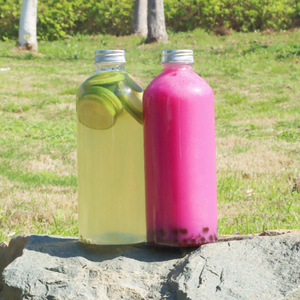



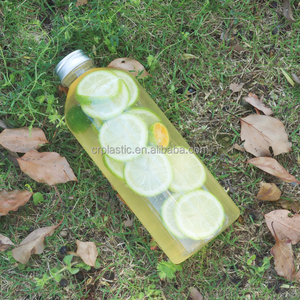


































































































Milk producers offer several kinds of 1000 ml milk bottles made from different materials.
Here are some common types:
Plastic Milk Bottles
Plastic bottles normally use high-density polyethylene (HDPE) because of its strength, flexibility, and resistance to moisture. These quality attributes make it a suitable choice for milk storage.
Milk producers like the lightweight nature of the bottles since they are easier to handle than glass or metal.
Producers also value that this material is resistant to breakage. This resistance helps reduce the risk of injuries in milk processing and consumption.
Glass Milk Bottles
Traditionally, glass was the preferred option for milk storage. Today, it is regaining popularity due to its ability to keep milk fresh longer than plastic.
Another favorable quality is that glass can be recycled indefinitely without any loss in quality. This recyclability makes it a more environment-friendly option than plastic.
Aluminum Milk Bottles
Aluminum is lightweight and thus easier to handle than heavier materials. Milk producers also value aluminum's resistance to corrosion and durability as it can withstand extreme weather conditions.
The metal also blocks light, which protects milk from spoilage due to light exposure. To make it more appealing, producers add a plastic lining to aluminum bottles to improve their aesthetics.
Cardboard Milk Bottles
1000 ml milk bottles usually come with an outer cardboard layer that consists of plastic or polyethylene inner layers.
This composite design provides a lightweight and recyclable option for milk packaging. In addition, these bottles offer durability and protection against light and oxygen, which helps maintain milk freshness. Cardboard bottles are also more environmentally friendly than plastic or glass.
Standard 1000 ml milk bottles come with features that improve the quality of milk packaging.
Cap Materials
Plastic milk bottles come with caps that manufacturers make from high-density polyethylene (HDPE), polypropylene (PP), and polystyrene (PS). They use HDPE for its strength and resistance to moisture and chemicals. These same attributes make caps secure and prevent milk contamination.
Polypropylene is also strong and tough, but slightly more flexible. This feature makes it easier to open bottles without breaking the seal. Another favorable quality is that it can withstand higher temperatures than HDPE. This quality makes it suitable for hot-filling processes.
Finally, PS is lightweight but rigid. It is also resistant to moisture and chemicals, making it useful in cap production.
Label Design & Printing
1000 ml plastic milk bottles have labels with images printed on them using techniques like digital printing, flexography, and rotogravure.
Manufacturers use digital printing for smaller label batches. They use flexography or rotogravure for larger projects.
These printing techniques ensure high-quality images and vibrant colors that enhance the overall aesthetic of the bottle.
Durability and Strength
Plastic milk bottles have favorable characteristics like shatter resistance and flexibility that contribute to their durability compared to glass bottles.
They are lightweight, making them easier to transport and handle. Their toughness allows them to withstand rough handling during delivery and storage without compromising the contents' quality.
Reusability and Recycling
Certain milk bottles like glass and some plastic variants can be reused several times before recycling. For example, glass bottles can be collected, sanitized, and refilled.
This reusability extends the product's life and reduces the environmental effect of discarded packaging.
Plastic bottles have less durability but can be easily recycled. Recycling conserves resources and reduces waste in landfills.
Environmental Considerations
Producers increasingly prefer milk bottles made from renewable materials. They are also switching to recyclable plastics to reduce the carbon footprint of their operations.
Many milk bottles now include recycled content, further enhancing their sustainability.
The 1-liter milk bottle has versatile uses that extend beyond the direct storage and transportation of milk.
Daily Milk Consumption
The milk bottle carries milk for daily consumption in homes and businesses where milk is a popular beverage. With a capacity of one liter, it is big enough for individual or small group use without being too bulky.
People can carry the lightweight bottle and enjoy milk on the go. It is also suitable for eating milk with cereals or enjoying milkshakes.
Culinary Applications
Milk in a 1000 ml bottle is useful in recipe preparation where milk is required as an ingredient, for example, in baking and cooking.
This milk quantity meets the milk requirements of a typical user in recipes that need moderate milk amounts. In larger recipes, buyers can store larger quantities for use over time.
Coffee and Tea Preparation
It is also convenient to keep the milk fresh longer and have enough for coffee, tea, or other milk-added drinks. This benefit eliminates the need to buy smaller milk quantities that last shorter.
Powdered Milk Production
Producers can use milk in the 1-liter bottle to make milk powder, a long-term storage option for milk that can be reconstituted when necessary. They normally dry the milk to a moisture percentage of 2% or less, which is the shelf life threshold for milk.
Milk Quality Monitoring
Large 1000 ml bottles make it easier for consumers to detect milk quality issues such as abnormal coloration, smell, or taste, for example. These characteristics are usually apparent on larger containers than on smaller ones.
Packaging for Specialty Milk
Besides regular milk, this bottle size is also suitable for specialty milk like almond, oat, soy, or flavored milk. Consumers prefer this convenient format for plant-based or flavored milk, similar to traditional cow's milk.
Promotions and Brand Loyalty
The 1000 ml milk bottle is large enough to display promotional messages or visually appealing images that resonate with consumers. These brand attributes help create a bond between consumers and manufacturers and increase brand loyalty.
Several important factors affect the choice of milk bottles for sale, especially the suitability of the selected option for a user.
Bottle Material
One of the most important variables is the bottle material. Glass, plastic, aluminum, and cardboard all have unique benefits and drawbacks.
Plastic is therefore a more affordable option than glass even though glass offers a more classic and pure appearance. Aluminum has superior strength and is lighter than glass but plastic. In addition, he cardboard bottle is the most environmentally friendly option and the least expensive.
Cap Type and Seal Quality
A well-fitting cap is crucial to maintain milk freshness and prevent leakage. Milk bottle caps vary in type. Some include a tamper-evident feature that ensures consumers know if the bottle was previously opened. Some have a resealable mechanism that allows multiple servings while keeping the milk fresh between uses.
Another consideration is the ease of opening, particularly for consumers with mobility issues.
Shelf Life and Quality Preservation
Manufacturers should also consider what material has the desired effect of preserving milk quality and increasing its shelf life.
Materials like glass and aluminum offer more resistance to oxygen than others and can better preserve milk's nutritional value, flavor, and freshness over time. They should also choose a light-proof bottle to minimize exposure to harmful UV rays.
Environmental Impact
The sustainability of the bottle is another essential consideration. They should use eco-friendly materials like recycled plastic, cardboard, or glass. The materials should also have recycling options after the bottle is used up.
Cost-Effectiveness
Producers should balance quality and price when choosing milk bottles. This balance helps settle on an option that does not hinder milk quality but is affordable to the milk manufacturer. The cost of the bottles should also not exceed the benefits they offer.
Yes, milk bottles are suitable for storing other liquids, including water, juices, and smoothies. Nonetheless, it is always recommended to users that they only use food-safe bottles for food storage. Food-safe materials do not transfer any taste or harmful chemicals to the liquids.
Certain milk bottles are dishwasher-safe and can withstand the cleaning process without losing quality. Glass and some high-quality plastic bottles are commonly advertised as dishwasher safe.
A large milk bottle has a capacity of 1000 milliliters or 1 liter. This capacity is big enough for individual or small group usage without being too bulky.
Milk bottle plastic caps are normally spill-proof when fitted correctly. Besides, the seal keeps milk fresher for a longer period and prevents spills and leaks when stored properly.
Not all milk bottles are recyclable. However, many manufacturers intentionally make them from recyclable materials due to increasing environmental concerns among consumers. While most glass milk bottles are recyclable, only some plastic variants are recyclable.